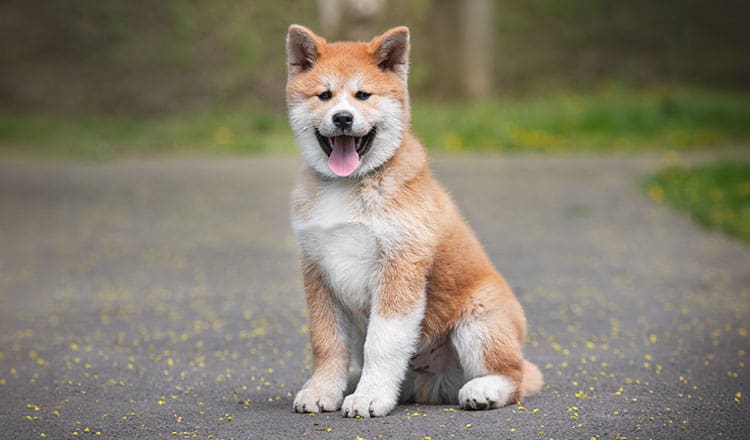
Introduction
Many people dream of having a dog. They picture long walks, happy faces, and wagging tails. Yet owning a dog also means paying vet bills. Some dogs need simple shots, while others may need big surgeries. To protect your wallet, you can buy pet insurance. However, the price of that insurance is not the same for every pup. In fact, plans for the Most Expensive Dog Breeds can cost three or four times more than plans for other pets. This guide explains why the cost is high, how insurance works, and what you can do to save money, all in words a ten‑year‑old can easily understand.
Why Are Some Dog Breeds More Expensive to Insure?
Insurance companies study thousands of vet records. They look for patterns that tell them which dogs get hurt or sick most often. If a breed has many claims for the same health problem, that breed jumps to the top of every cost list. For example, short‑nosed dogs have trouble breathing, so they end up at the vet often. Big dogs sometimes twist their stomachs, a crisis called bloat, and surgery for bloat costs lots of money. Heavy dogs also wear out their hips and knees sooner than light dogs. As a result, large breeds usually need more x‑rays, bigger doses of medicine, and longer recovery stays. Insurance companies must plan for those costs.
Therefore, they raise the monthly price for the families who own them. Genetics can add another layer of risk. Some breeds carry genes that lead to heart disease or certain cancers. When a company sees many claims for those illnesses, it adds a surcharge to every new policy for that breed. Age also plays a role. Prices rise each year a dog grows older, especially for breeds that already sit on the expensive list. Finally, location matters. Vets in big cities often charge more than those in small towns, and insurance premiums follow that trend.
The Most Expensive Dog Breeds to Insure
The English Bulldog French Bulldog and Great Dane top almost every list of costly pups. All three share big medical risks that push premiums sky‑high. English Bulldogs and French Bulldogs fight breathing trouble every day because their airways are narrow. They also suffer skin infections in their wrinkles. Great Danes are gentle giants, but their huge bodies make them prone to bloat and heart problems.
Rottweilers and Bernese Mountain Dogs pay steep insurance fees too. Rottweilers often tear knee ligaments, while Bernese Mountain Dogs have one of the highest cancer rates of any breed. Cane Corsos Chow Chows and Newfoundlands add more names to the pricey pack, thanks to hip pain, eye issues, and heavy hearts. Doberman Pinschers face a serious heart disease called DCM, and Bullmastiffs struggle with bone cancers. Each of these dogs visits the vet often, needs costly medicine, or requires surgery that can cost thousands of dollars, and that reality cements their place among the Most Expensive Dog Breeds to insure.

The Role of Size: Expensive Large Dog Breeds
Size alone does not decide everything, yet it pushes numbers upward fast. When a ninety‑pound dog needs anesthesia, the vet must use more drugs than for a ten‑pound dog. When that big dog needs an x‑ray, the machine must cover wider bones. If surgery follows, the hospital staff needs more people to lift and monitor the patient. All of those extra steps carry a price. Consequently, many Expensive Large Dog Breeds show up again and again in premium charts.
Great Danes, Newfoundlands, Bullmastiffs, and Bernese Mountain Dogs form a parade of gentle but costly giants. The same surgery that might run eight hundred dollars for a small terrier could exceed three thousand dollars for one of these big friends. Insurance companies see those bills daily. So, when you ask for a quote on an Expensive Large Dog Breeds policy, be ready for a higher number than for a smaller pet.
How Pet Insurance Works
Pet insurance mirrors human health insurance. First, you pay a fee each month called a premium. Second, you choose a deductible, which is the amount you pay before insurance starts helping. Third, the company promises to pay back a set percentage of each vet bill, called the reimbursement rate. Finally, every plan has a limit on how much it will pay each year. If you pick a low deductible, the monthly premium climbs because the company takes on more risk early.
If you pick a high deductible, the company lowers the premium because you shoulder more of the first costs. When you own one of the Most Expensive Dog Breeds, the math shifts. The company expects more claims, so it builds that into your premium. Some plans now offer wellness add‑ons to cover shots and checkups. These can help level the budget, but they also raise the monthly price. Therefore, compare plans side by side. Look at how each covers hereditary problems, hip dysplasia, and chronic diseases. Those categories often drive the biggest bills for the breeds in this guide.
Ways to Pay Less on Insurance
You do not have to accept the first quote you see. Instead, shop early, before your puppy shows any sign of illness. Puppies cost less to insure because they have no pre‑existing problems. You can also select a higher deductible if you are comfortable paying small bills out of pocket. Another option is an accident‑only policy. It costs less than full coverage because it pays only when your dog is hurt, not when your dog becomes sick.
Rescue groups and military families sometimes earn special discounts, and many companies give a multi‑pet deal if you insure two or more animals. Keep your dog healthy with good food, daily walks, and regular vet checkups. A fit dog files fewer claims, and some companies reduce premiums over time for customers who rarely submit bills. Finally, compare at least three providers every year. One company may raise its rates while another keeps prices steady. Switching can save money though you must read the fine print first.
Less Expensive Dog Breeds
Beagles Chihuahuas and Poodles lead the pack of Less Expensive Dog Breeds to insure. They weigh little, and most live long healthy lives with only routine care. Mixed‑breed dogs also enter the low‑cost lane because they draw genes from different families, which lowers the chance of inherited illness. Smaller dogs need less anesthesia, smaller doses of medicine, and shorter recovery times.
Consequently, their vet bills stay manageable. If you want an athletic companion yet hope to save on premiums, consider a poodle mix such as a Labradoodle or a Goldendoodle. Those pups often inherit the poodle’s strong health plus the other parent’s cheerful nature. However, always remember that every dog, even a Less Expensive Dog Breeds member, can face surprise accidents. Therefore, basic insurance is still wise.
Exclusive Dog Breeds and Hidden Costs
Rare dogs turn heads at the park, yet they can cause headaches for your budget. Exclusive Dog Breeds like the Azawakh, Thai Ridgeback, or Catahoula Leopard Dog appear on few vet charts. Because the data is thin, insurance companies guess at the risk. Some firms add a big safety margin to every unknown breed. Others place them in a mid‑price group, only to raise rates later if claims jump.
In addition, rare breeds sometimes come from small gene pools, which can hide genetic problems that show up only after many owners report issues. Therefore, before you buy an Exclusive Dog Breeds puppy, talk to several insurers. Ask how they set rates for uncommon pets, and check if they adjust prices each year.

Smart Shopping Checklist
Choosing a plan can feel tricky, yet a clear list makes it easy. First, read the policy’s definition of a pre‑existing condition. Many owners learn only later that a minor puppy rash became an uncovered skin disease. Second, confirm the waiting period.
Some companies hold new illness claims for fourteen days, while others wait thirty. Third, check the annual payout cap. High caps protect you from one giant bill that would otherwise drain your bank. Fourth, look for coverage of hip dysplasia, especially if you own one of the Most Expensive Dog Breeds or any Expensive Large Dog Breeds. Fifth, make sure the plan pays for chronic care like insulin or heart medicine. Sixth, test customer service by calling with a simple question. Fast, friendly answers today often signal fast claim payouts tomorrow. Seventh, re‑examine your budget each year and switch plans if needed, because staying loyal does not always save money.
Frequently Asked Questions
Q1: Why are some dog breeds more expensive to insure?
Ans: They get sick more often or need pricey surgeries, so insurance companies charge more to cover those extra bills.
Q2: What is the most expensive dog breed to insure?
Ans: English Bulldogs French Bulldogs and Great Danes sit at the top of the cost charts because they face breathing, stomach, or heart problems.
Q3: Are big dogs always more expensive to insure?
Ans: Almost always yes. Large dogs need more medicine and bigger equipment, which makes every vet visit cost more.
Q4: Can I save money if I insure my dog when it’s young?
Ans: Yes. Puppies have no health history yet, so companies give lower prices at the start.
Q5: Do all pet insurance plans cover everything?
Ans: No. Some plans skip pre‑existing issues or set low caps. Always read the policy from top to bottom.
Final Thoughts
A dog brings laughter, comfort, and adventure into any family. Yet love alone cannot pay a vet bill. Knowing which pups belong to the Most Expensive Dog Breeds category helps you plan ahead. Remember, even the finest insurance plan cannot replace regular exercise, solid nutrition, and early checkups. Keep your dog strong, and your policy may stay affordable. Still, if your heart is set on one of the Most Expensive Dog Breeds, do not let cost alone stop you. Research, budget, and pick the right insurance. Then enjoy every wag, lick, and cuddle your faithful friend offers.
Join Us on Facebook
Do you have funny stories about your dog’s vet visits? Want more tips on saving money for your pet’s care? Visit our friendly community on Facebook. Share photos, ask questions, and learn from other owners who love dogs as much as you do.